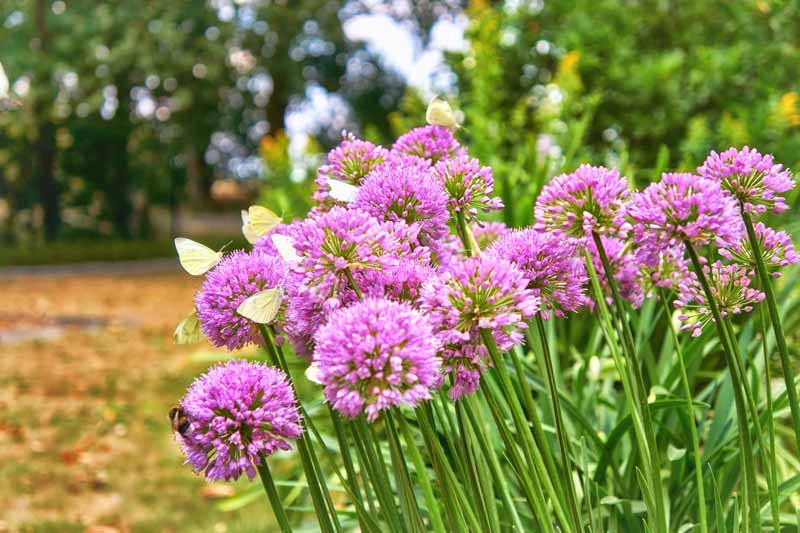Seasonal Agapanthus Care: Preparing for Winter and Summer
Seasonal Agapanthus Care: Preparing for Winter and Summer
Blog Article
Understanding the Art of Agapanthus Care: Crucial Actions for Healthy And Balanced Growth and Dynamic Blossoms
In the realm of horticulture, the farming of agapanthus stands as a gratifying undertaking for those who seek to nurture these elegant blooming plants. With their striking blooms and stylish vegetation, agapanthus has actually captured the interest of garden enthusiasts worldwide. Nevertheless, accomplishing ideal growth and dynamic blossoms requires a nuanced strategy that encompasses different vital actions. From selecting the right range to mastering trimming methods, the journey towards cultivating thriving agapanthus plants is complex and holds the crucial to opening the full potential of these agricultural gems.

Selecting the Right Agapanthus Variety

When choosing the ideal Agapanthus variety for your garden, consider variables such as climate viability, flower shade, and development habit. Agapanthus, frequently referred to as Lily of the Nile or African lily, can be found in a variety of colors varying from tones of blue and purple to white. Select a flower color that matches your existing yard scheme to create an unified landscape. Furthermore, think about the environment in your region to make sure the Agapanthus range you select can flourish in your certain conditions. Some varieties are more forgiving of cool temperatures, while others favor warmer environments. Recognizing the growth behavior of various Agapanthus ranges is important for correct positioning within your garden. Some ranges have a clumping growth behavior, ideal for borders or containers, while others have a more dispersing nature, appropriate for ground cover or mass plantings. By thoroughly examining these elements, you can select the best Agapanthus range to improve the beauty of your yard.
Ideal Planting Conditions
Considering the optimal environmental demands is vital for successful Agapanthus farming. Agapanthus plants are delicate to cold temperature levels and should be safeguarded from frost throughout wintertime months.
To make certain healthy and balanced development and vivid flowers, plant Agapanthus light bulbs at a deepness of concerning 2-4 inches and room them 8-12 inches apart. Including natural issue, such as garden compost, to the dirt can enhance drain and fertility, promoting robust origin growth. Mulching around the base of the plants assists preserve dampness and reduces weed growth. Normal watering is important, particularly during the growing period, to maintain the dirt constantly damp but not soaked.
Watering and Fertilizing Tips
Keeping proper wetness degrees and providing necessary nutrients are crucial components in the care regimen for Agapanthus plants. When it comes to watering Agapanthus, it is crucial to strike an equilibrium. These plants like consistently damp dirt but are prone to root rot if overwatered.
Fertilizing Agapanthus is necessary for advertising healthy and balanced development and prolific flowers. Use a well balanced fertilizer, such as a 10-10-10 formula, in the you can try these out early spring as brand-new development emerges. By adhering to these watering and feeding tips, you can ensure your Agapanthus plants grow and generate vivid, durable flowers.
Trimming Strategies for Agapanthus
Pruning Agapanthus plants at the suitable times and with correct techniques is essential for maintaining their wellness and advertising optimal development and blooming. The optimal time to prune Agapanthus is in late wintertime or very early spring prior to new development arises.
Deadheading spent flowers can also redirect the plant's energy into creating even more blooms instead than setting seeds. If you want to collect seeds for proliferation, leave some blossoms to completely dry and fully look at this web-site grown on the plant.
Keep in mind to make use of tidy, sharp tools to make exact cuts and decrease the threat of presenting diseases. Agapanthus. Regular trimming will assist maintain your Agapanthus looking cool and healthy while ensuring a plentiful screen of stunning blossoms
Dealing With Typical Insects and Conditions
After guaranteeing appropriate trimming strategies for Agapanthus, it is important Visit Your URL to attend to usual pests and diseases that can affect the health and vitality of these plants. Agapanthus plants are typically sturdy however can still drop victim to certain problems. One typical bug that influences Agapanthus is the Agapanthus gall midget. This tiny, orange fly lays its eggs in the foliage, resulting in distorted growth and flower buds that stop working to open up. To battle this pest, prune and destroy any type of damaged plant components and think about making use of insecticidal soap.
Another typical concern is fungal fallen leave area, which provides as dark sores on the fallen leaves. To protect against fungal conditions, make sure great air blood circulation around the plants, prevent overhanging watering, and eliminate any infected fallen leaves immediately. Furthermore, Agapanthus plants can experience root rot if they are grown in inadequately draining dirt. To stop this, plant Agapanthus in well-draining dirt and prevent overwatering. By being alert and taking timely activity versus illness and parasites, you can assist your Agapanthus plants grow and produce dynamic blooms.

Conclusion
In conclusion, grasping the art of agapanthus care involves selecting the ideal selection, giving suitable planting conditions, proper watering and feeding, appropriate pruning methods, and dealing with typical insects and diseases. By adhering to these important actions, you can ensure healthy development and dynamic blossoms for your agapanthus plants. Bear in mind to regularly check and maintain your plants to advertise their total well-being and durability.
To make sure healthy development and vivid flowers, plant Agapanthus bulbs at a deepness of concerning 2-4 inches and area them 8-12 inches apart. By complying with these watering and fertilizing suggestions, you can guarantee your Agapanthus plants thrive and produce vivid, durable flowers.
One common insect that affects Agapanthus is the Agapanthus gall midget. In addition, Agapanthus plants can endure from root rot if they are grown in inadequately draining pipes dirt. By adhering to these crucial steps, you can ensure healthy and balanced growth and lively flowers for your agapanthus plants.
Report this page